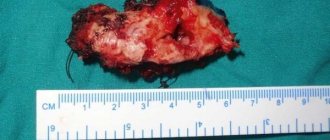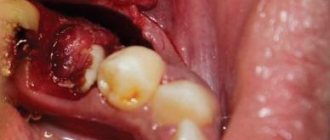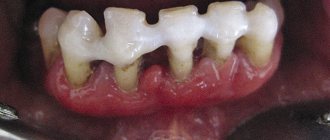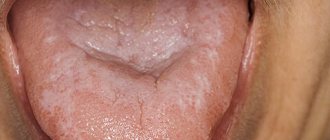Candidiasis (thrush) is a disease in which the skin, as well as the mucous membranes of the mouth and genitals, are affected by the yeast-like fungus Candida. It is classified as a conditionally pathogenic environment. This means that in small quantities such microorganisms inhabit the mucous membranes and skin of healthy people, and their growth is inhibited by the body’s immunity. But when it weakens, intensive proliferation of the fungus occurs, which leads to the development of thrush.
When treating this disease, it is important to choose the right medications based on the type of Candida fungus (there are over eighty of them). Otherwise, there is a high risk of developing a drug-resistant strain, which makes further treatment much more difficult.
The most common forms of the disease are oral (in infants and newborns) and vaginal (in women and men of various ages). This article will focus on vaginal candidiasis.
Causes
Factors that can trigger the development of candidiasis are conventionally divided into three categories:
- Exogenous factors - the environment facilitates the penetration of harmful
- microorganisms:
- increased levels of fungi in the air under production conditions;
- temperature conditions that cause excessive sweating;
- improperly observed hygiene regime.
- Endogenous factors – a decrease in the body’s resistance due to the occurrence of:
- vitamin deficiency;
- metabolic diseases such as obesity, dysproteinemia, ulcerative colitis, diabetes mellitus, dysbacteriosis;
- Itsenko-Cushing's disease;
- infectious chronic processes;
- vegetative dystonia with increased sweating;
- neoplasms;
- thyrotoxicosis;
- diseases of the blood system, etc.
Candidiasis of the genitourinary organs (thrush) in men
The cause of the disease is primarily the species C. albicans, less commonly C. tropicalis and C. krusei. C. albicans (albicans - whitish, shiny (lat.) - is the most common species, which has the most pronounced pathogenic properties among all pathogens of candidiasis. Fungi of the genus Candida are widespread in nature, live on household objects, food products, primarily on rich sugars in vegetables and fruits. They quickly and easily colonize human skin and mucous membranes bordering the external environment, including the mucous membranes of the oropharynx, nose, digestive and genitourinary tracts. According to many authors, fungi of the genus Candida are an associate of the normal microflora of the human body, therefore, they are quite often isolated in cultures from the healthy mucous membrane of the urethra, vagina and in urine cultures.
Under certain conditions, saprophytic fungi of the genus Candida can acquire pathogenic properties. In such cases, single or small elements of the fungus located on a healthy mucous membrane begin to multiply intensively, forming multiple filamentous forms (pseudomycelium). An indicator of parasitic activity of excitation is the rapid formation of a filamentous form of the fungus. Fungal cells with new, pathogenic properties attach to the epithelial cells of the mucous membrane, primarily to cells rich in glycogen. Then they are released into them and parasitize in the cytoplasm and nuclei, gradually destroying the host cell and forming lesions of the mucous membrane.
Fungi produce endotoxin and a number of proteolytic, lipolytic and saccharolytic enzymes. The action of these enzymes explains a number of clinical symptoms, in particular, intense itching during vaginal candidiasis, caused by the breakdown of carbohydrates in the epithelial cells of the vaginal mucosa into acetic, formic and pyruvic acids, which irritate the abundant nerve endings located here.
The main causes of the development of candidiasis (thrush) in men Although the causative agents of candidiasis can be sexually transmitted, in most cases, candidiasis is not associated with sexual contact. Candidiasis is not a sexually transmitted disease and is considered together with them due to a similar clinical picture.
Factors contributing to the development of candidiasis: - Congenital and acquired immunodeficiency conditions (HIV infection). — Taking broad-spectrum antibiotics. — Weakening of general immunity (due to sudden climate change, severe emotional stress). — Endocrinopathies (primarily diabetes mellitus). — General infections and intoxications. — Disturbance of homeostasis and normal microbial balance of human mucous membranes (dysbacteriosis) under the influence of endogenous (stress, local infections) and exogenous (corticosteroid hormones, antibiotics, cytostatics). — Weakening of local tissue resistance and disruption of the protective mechanisms of the mucous membrane: local injuries (mechanical, thermal, chemical), maceration, disruption of mucus formation by the glandular epithelium in the presence of chronic or concomitant acute inflammation of the genital organs.
Epidemiology of genitourinary candidiasis in men.
In men, the development of candidiasis is often facilitated by exogenous infection, and the isolated strains of the fungus often have increased pathogenicity.
Candidiasis of the penis, which occurs in a man after sexual contact with a woman suffering from candidal vaginitis, has a second name - “marital thrush”.
Since the skin and mucous membranes of the genital organs of healthy people are highly contaminated with fungi of the genus Candida, endogenous infection cannot be ruled out, as well as the introduction of pathogens from other areas of the skin and mucous membranes, primarily from the rectal area. Therefore, transmission due to anal sex from a man and transfer of infection from the anus are the reason for primary infection of the vagina or re-infection after treatment.
Symptoms
Vaginal candidiasis is most common among women of reproductive age, but can also occur in girls, affecting the vagina and external genitalia, and even in men, the foreskin and head of the penis.
Symptoms of thrush in women:
- discomfort during sexual intercourse;
- swelling and redness of the mucous membranes of the genital organs;
- copious discharge of a cheesy consistency with a sour odor;
- burning and pain when urinating;
- itching that intensifies before or after menstruation, in the evening, with untimely hygiene, with hypothermia.
Symptoms of candidiasis in men:
- pain during sexual intercourse and urination;
- itching, redness, pain, formation of a white cheesy coating in the area of the head of the penis.
If you notice the above signs, you should immediately consult a doctor. “The ProfiMed polyclinic offers women to make an appointment with a gynecologist for a fee in Moscow, and men to use the services of a professional urologist.
Vaginitis is a widespread problem and one of the most common reasons for visiting an obstetrician-gynecologist. Among the various variants of vaginal infection, the undisputed leaders are considered to be vulvovaginal candidiasis (VVC) and bacterial vaginosis (BV), detected respectively in 17-39% and 22-50% of women with pathological discharge (leucorrhoea) from the vagina [5]. The prevalence of VVC and BV is extremely high. Approximately 75% of women of reproductive age experience VVC at least 1 time during their life, 40-45% experience 2 recurrences of the disease or more. Most cases of VVC are classified as uncomplicated candidiasis [8], but in approximately 10% of patients, VVC has a complicated course.
Bacterial vaginosis is considered the most common form of vaginal disease and occurs in approximately 30% of women [4]. Despite the indisputable infectious origin of VVC and BV, their infectiousness to a sexual partner has not been proven [4, 13], and they are not classified as sexually transmitted infections (STIs). However, a number of factors related to sexual behavior increase the risk of these diseases. These include: the beginning of sexual activity, the practice of orogenital sex, changing sexual partners, frequent vaginal douching [4].
Problems associated with VVC and BV cause patients a lot of inconvenience, associated not only with changes in the quantity and quality of vaginal discharge, but also with burning, skin irritation, a feeling of dryness, dyspareunia, and dysuria [5]. In addition to immediate discomfort, BV and VVC increase the risk of spontaneous abortion, premature birth, ante- and intrapartum infection of the fetus [12, 19, 22], postpartum endomyometritis, contribute to the development of cervicitis, inflammatory diseases of the pelvic organs involving the urinary system, the spread of viral infection, including HIV and genital herpes, gonorrhea, chlamydia, trichomoniasis, increase the risk of inflammatory postoperative complications [7, 33, 38].
According to the USA, Europe, and Canada, the most common causative agent of VVC is Candida albicans
(about 80-90% of cases).
The remaining fungi of the genus Candida
are collectively called non-
albicans
C. glabrata
is the most common [37].
According to the results of the epidemiological study ARTEMISK DISK in Russia, the main causative agent of candidiasis (various localizations, including VVC) was C. albicans
- 76.1%, in second place was
C. glabrata
- 5.3%, then
C. krusei
- 3 .4%,
C. parapsilosis
- 3.1%, which generally corresponds to the prevalence of certain types of fungi in North America and Europe [32].
Vulvovaginal candidiasis caused by Candida
non-
albicans
is regarded as a complicated disease. In addition, complicated forms of VVC include severe vaginitis, VVC in individuals with a reduced immune response, and recurrent VVC.
It is not entirely clear what exactly causes the frequent (4 times a year or more) repeated episodes of the disease. Systemic immunosuppression cannot serve as a sufficient justification for recurrent VVC. This is clearly demonstrated by observations of HIV-infected patients who have vaginal colonization with Candida
increases significantly, but the frequency of recurrent VVC increases moderately, far behind the increase in the frequency of episodes of oropharyngeal candidiasis [28]. It is more likely that relapses of VVC are caused by suppression or reduction of local protective immunoregulatory mechanisms with changes in the cytokine profile [18]. There is a version that the cause of symptomatic candidiasis is increased local sensitivity to fungi [15].
Diagnosis of VVC is based on the detection of budding yeast cells and/or pseudomycelium by light microscopy of native preparations or microscopy of Gram-stained smears. In case of complicated VVC, a cultural examination (inoculation on a nutrient medium) is recommended. Candida
spp.
- single-celled microorganisms measuring 6-10 microns. Many Candida
spp.
dimorphic, forming blastomycetes (bud cells), pseudomycelia (chains of budding yeast cells) and/or mycelium. Unlike mycelium, pseudomycelium does not have a common shell or partitions. The causative agents of Candida
non-
albicans,
especially
C. glabrata,
do not form pseudomycelium and are poorly recognized by light microscopy, and therefore the presence of VVC symptoms with negative microscopy results dictates the need to perform a culture test.
For BV, the etiological role of a specific microorganism as the sole cause of the disease has not yet been proven. Gardnerella vaginalis is most often associated with BV.
and
Mobiluncus curtisii,
but these microorganisms can also be detected in healthy women [16].
The advent of nucleic acid amplification methods (NAAT) and polymerase chain reaction, which make it possible to identify microorganisms that are difficult to cultivate, has expanded the microbial palette of BV. It turned out that, in contrast to the microbial spectrum of the vaginal contents of healthy women (from 1 to 6 species of bacteria with a predominance of lactobacilli), women with BV have a significantly greater diversity of microorganisms (from 9 to 17 per sample, on average 12.6), and in each sample, 58% of completely new clones were identified [11]. In total, 35 species of unique bacteria were identified in women with BV, including several species that did not have close relatives, and Atopobium vaginae
[11, 14 , 39].
In addition to A. vaginae,
the list of unculturable microorganisms was supplemented by BV-associated bacteria - BVAB 1, BVAB 2, BVAB 3,
Megasphera
spp.,
Eggerthella
spp.
and Leptotrichia
spp. [17, 20].
To assess the species diversity of the bacterial flora found in BV, a DNA biochip was developed [1], the use of which made it possible to identify 29 different types of microorganisms in 80 women with BV [2], with A. vaginae being most often identified.
It is important that
A. vaginae
was detected with the highest frequency during a long-term recurrent course of the disease, independently of other BV-associated microorganisms
(G. vaginalis, Mobiluncus
spp.,
Ureaplasma urealyticum, Mycoplasma hominis)
[2].
Although A. vaginae
has been detected in vaginal fluids not only in patients with BV but also in healthy women, the prevalence ratio of
A. vaginae
among patients with BV is clearly higher than among healthy women [1].
Whatever microorganisms the most advanced diagnostic techniques identify in women with impaired vaginal microbiocenosis, no one doubts that BV is characterized by the replacement of lactobacilli by opportunistic microorganisms, mainly anaerobic ones. Therefore, in clinical practice, the diagnosis of BV is based not on the identification of certain microorganisms, but on the basis of clinical and laboratory criteria. In this case, the criteria most often used are R. Amsel et al. (1983), when diagnosis requires identification of 3 out of 4 signs, only one of which (detection of “key” cells in Gram stain) is purely microbiological, and the rest are clinical. Less commonly used are the criteria of R. Nugent et al. [21], when Gram staining determines the corresponding bacterial morphotypes, based on the ratio of which the diagnosis is made.
Despite the obvious difference between aerobic fungal and polymicrobial, predominantly anaerobic, infection, VVC and BV can be combined, creating additional difficulties in treatment. Diagnosis of such a mixed infection is based on microscopy of a Gram-stained smear and/or culture results. Microscopy of a vaginal smear reveals predominantly superficial epithelium and key cells. The leukocyte reaction reflects the presence of inflammation. With a large (massive) number of microorganisms, anaerobes and gardnerella dominate, yeast cells and/or fragments of pseudomycelium are present, lactobacilli are absent. Culture studies demonstrate a massive (more than 9 lg CFU/ml) number of microorganisms, but under aerobic conditions only Candida fungi are present.
Lactobacilli are absent or their titer is very low; Bacteroides, Gardnerella, anaerobic cocci, etc. dominate.
The combination of VVC and BV requires simultaneous treatment of both infections. But even in the absence of clinical and laboratory signs of VVC, treatment of BV with antibiotics can lead to the development of symptoms of candidiasis in cases of previous colonization of the vagina by fungi [30].
There are two effective ways to treat bacterial vaginosis. One of them is metronidazole or its derivatives from the group of 5-nitroimidazoles. True resistance of anaerobic microorganisms to nitroimidazoles is a rare phenomenon. As a rule, the effectiveness of metronidazole for BV in daily doses of 800 to 1200 mg for 1 week exceeds 90%, and the effect persists for 1 month in 80% of patients. Simultaneous treatment of BV with metronidazole at a dose of 2 g is effective in relieving symptoms, but the percentage of relapses is higher than when using a weekly course of the same drug. A significant disadvantage of oral administration of metronidazole is its poor tolerability, and tinidazole in a 5-day regimen, although better tolerated, has the same potential for side effects as metronidazole [23]. Local therapy with 2% clindamycin cream or metronidazole gel is as effective as systemic therapy [12, 27], while the clinical effectiveness of clindamycin has been demonstrated even in the presence of resistance of microorganisms detected in tests to this antibiotic [7, 27]. According to the US Centers for Disease Control (CDC), various forms of metronidazole (tablets and gel) and 2% clindamycin cream (suppositories) are the standard treatment for BV in the United States.
Metronidazole is prescribed at a dose of 500 mg 2 times a day for 7 days, or 0.75% metronidazole gel 5 g intravaginally once a day for 5 days, or 2% clindamycin cream 5 g intravaginally for 7 days. As an alternative, these recommendations suggest treatment with clindamycin 300 mg orally 2 times a day for 7 days or clindamycin suppositories 100 mg intravaginally at night for 3 days in a row. Undoubtedly, the shortest treatment regimen, which involves a 3-day course of clindamycin suppositories, is the most acceptable for women. As for the administration of single-stage treatment with metronidazole (orally at a dose of 2 g), the convenience of this regimen is offset by its relatively low effectiveness, and therefore it is currently not recommended by the CDC, even as an alternative option [12]. European recommendations [13] for the management of patients with vaginal discharge also indicate the low effectiveness of the simultaneous use of metronidazole at a dose of 2 g for BV. According to Russian recommendations [3], the preferred method is local (intravaginal) administration of metronidazole or clindamycin: clindamycin, cream 2% 5.0 g intravaginally at night, 6 days; Metronidazole, gel 0.75% 5.0 g intravaginally at night, 5 days. An alternative regimen involves the use of clindamycin suppositories (100 mg) for 3 days. Orally 5-nitroimidazoles or clindamycin are recommended to be prescribed only if intravaginal therapy is ineffective: metronidazole 500 mg orally 2 times a day for 7 days; clindamycin 300 mg 2 times a day for 7 days; ornidazole 500 mg orally for 5 days.
Treatment-resistant cases of BV pose a serious problem [40]. If standard therapy with metronidazole is ineffective, it can be repeated with an increase in duration, and if it fails again, another attempt at repetition is recommended with a preliminary course of antibiotic treatment in order to eliminate the accompanying aerobic microflora that can reduce the effectiveness of the nitro group of 5-nitroimidazoles on anaerobes [12, 13]. However, the feasibility of this approach is controversial for two reasons. First, long courses of oral metronidazole are poorly tolerated. Secondly, the reason for the lack of effect of therapy may not be aerobic microorganisms, but anaerobes associated with BV that are insensitive to nitroimidazoles.
Uncultivable or difficult to cultivate microorganisms may be resistant to metronidazole, and they also provide a persistent relapsing course of BV. Repeated episodes of vaginitis are observed in 30% of women within 3 months after treatment [40]. A series of studies conducted in Australia showed that after oral administration of metronidazole, relapses of BV within 1 year of observation were observed in 58% of patients [9]. Risk factors for relapse were associated with a previous history of BV, regular sexual activity with a regular partner, and lesbianism. Condom use did not affect the risk, and hormonal contraception had a protective effect. In a molecular analysis of noncultured organisms, the study authors found that failure of long-term response to metronidazole therapy was significantly more likely to be associated with the detection of A. vaginae
[10].
The inability to identify unculturable microorganisms in routine practice before the start of therapy becomes the key to its ineffectiveness [7, 11]. Resistance of A. vaginae
to metronidazole has been demonstrated repeatedly [14].
A number of publications [7, 41] have shown that A. vaginae
is more sensitive to clindamycin than to metronidazole
in
in vitro Clinical studies confirm a significantly higher effectiveness of standard intravaginal therapy for BV associated with A. vaginae,
clindamycin (2% cream, 5 g intravaginally for 6 days) compared to metronidazole (0.75% gel, 5 g intravaginally for 5 days, at night) .
Similar results were obtained in studies comparing topical therapy with metronidazole and clindamycin for BV, presumably associated with Mobiluncus
[26].
Apparently, the sensitivity characteristics of microorganisms involved in the development of BV are the leading factor in the failure of treatment or the increased frequency of relapses. Strategies for treating sexual partners and recolonizing the vagina with lactobacilli have not demonstrated a significant effect in reducing the frequency of relapses and normalizing the vaginal microbiota [6, 40], although individual studies on the use of eubiotics and probiotics provide encouraging results [24]. At the same time, the participation of aerobic microorganisms, including fungi, in worsening the prognosis of treatment for BV cannot be discounted. A comparison of metronidazole gel and vaginal tablets containing metronidazole with nystatin found a reduction in relapse rates with the combination drug [27], even in the absence of data on the underlying fungal infection.
Thus, despite the comparable effectiveness of metronidazole and clindamycin, the latter has obvious advantages in the treatment of recurrent BV due to a wider range of effects on microorganisms, including unculturable or difficult to cultivate forms. The use of a 3-day course of vaginal clindamycin tablets is comparable in effectiveness to other courses of therapy, but the short duration of treatment makes the method more acceptable to patients. However, the use of clindamycin is fraught with the occurrence of VVC, which requires preventive measures.
Several groups of drugs with local and systemic action have been proposed for the treatment of VVC. Their effectiveness was equivalent, as demonstrated in a systematic review of 19 randomized controlled trials (RCTs) comparing topical and oral antifungal therapy [25], although the review authors noted a trend towards better long-term outcomes of oral therapy, associated with lower relapse rates [35]. . The undisputed leader of oral therapy with a good safety and efficacy profile is fluconazole, which is used in a single dose of 150 mg for uncomplicated candidiasis [34].
The presence of recurrent VVC requires long-term treatment regimens. Of these, the most popular in the world is the use of fluconazole at a dose of 150 mg once a week for 6 months after the initial relief of the next acute episode with three doses of 150 mg of fluconazole with an interval of 72 hours. According to the results of an RCT, 6-month use of fluconazole was accompanied by a significantly lower number of relapses after its completion (9%) compared with placebo (64%), and none of the patients stopped treatment due to side effects [37]. Despite the fact that in some patients the symptoms of VVC return several months after the end of treatment, the suppressive therapy regimen with fluconazole is currently the only method that has an evidence base of effectiveness. To control the symptoms of VVC in the absence of a sufficient effect of a six-month course, the possibility of its prolongation to a year is being considered. Other treatment approaches, including the use of yogurt, lactobacilli, Candida antigen desensitization,
low-carbohydrate diet has not yet confirmed its effectiveness in clinical studies [31].
The likely cause of VVC relapses and/or resistance to therapy is the characteristics of the infectious agent. It is known that C. albicans is sensitive to azole antimycotics,
the most common causative agent of VVC.
Candida
non-
albicans
is resistant to most antifungal drugs, and the treatment of such patients is always a big challenge.
In the USA and Europe, this problem is resolved with the help of a 2-week course of gelatin vaginal capsules containing 600 mg of boric acid; C. glabrata,
the most common non-
albicans
pathogen, is sensitive to this type of therapy [36]. Another method of therapy suggests the topical use of amphotericin B (50 mg suppositories) alone or in combination with flucytosine for 14 days [29]. Unfortunately, these treatment methods are not available in Russia, therefore, in domestic clinical practice, the task of eliminating resistant pathogens can only be solved by increasing the dose of azole antimycotics.
Treatment planning for VVC and BV, as well as mixed infections, should be based on evidence of the effectiveness of treatment regimens. Metronidazole and clindamycin for BV, oral and topical antimycotics for VVC have proven comparable effectiveness and can be prescribed as equal first-line therapy. But with repeated episodes of vaginitis or mixed infections, one should remember the characteristics of the pathogens of BV and VVC, which predispose to the formation of chronic forms of the disease. Considering the difficulties in diagnosing the cause of BV and prognosis of the course of VVC, in such situations the optimal treatment regimen may be the administration of clindamycin, which covers a wide range of unculturable anaerobes, in the form of local therapy and fluconazole as a means of preventing and treating VVC. A three-day course of clindamycin with a single dose of fluconazole can certainly be considered the most acceptable treatment option for patients.
Diagnostics
Diagnosis of vaginal candidiasis is carried out as follows:
- Microscopy of a smear test for thrush: a scraping is taken from the vaginal walls with a special swab onto a glass slide for further examination under a microscope. If there is an infection, Candida fungi will be present in the smear.
- Sowing - growing a culture of fungus from a smear scraping for analysis for thrush. Candidiasis is only diagnosed when fungal colonies grow to 10,000 CFU/ml, since in most women they are always present in the vagina.
- Determination of the type of Candida fungi and their sensitivity to medications.
Treatment
For mild cases of candidiasis in women, local treatment is used using vaginal suppositories or tablets, as well as antifungal creams:
- Clotrimazole (antifungol, canizon, candibene);
- Nystatin;
- Miconazole (Klion-D);
- Natamycin, etc.
Creams and suppositories cure thrush in a week, modern drugs - in one or two days. To fully guarantee recovery, the course of treatment is repeated twice. In some cases, a single dose of fluconazole (Mikomax, Diflucan, Forkan, Flucostat, etc.) is prescribed at a dosage of 150 mg orally.
When the infection recurs, treatment of candidiasis is aimed at relieving the symptoms of the disease and subsequent prevention. In addition to local treatment, oral medications are prescribed, which are selected individually for the specific type of Candida fungus. These are vaginal tablets and suppositories with clotrimazole, as well as taking flucanozole 100 mg orally - once a week for several months. It is also necessary to be examined regularly by a doctor.
To maintain immunity, it is recommended to increase the intake of bifidobacteria and limit irritating foods. During treatment you should abstain from sexual intercourse.
In most cases, the use of topical antifungal agents is enough to treat thrush for men. Your doctor will prescribe creams or ointments containing clotrimazole twice a day for a week. Additionally, general medications can be used if treatment is ineffective. Sexual contacts should be excluded during treatment.
It should be noted that with timely treatment, candidiasis cannot cause serious harm to health. But a long course of the disease can lead to damage to the kidneys, urethra and bladder, as well as to infertility. In particularly advanced forms, candidiasis has a damaging effect on the reproductive organs, which leads to male infertility.
Modern ideas about the treatment of urogenital candidiasis
Urogenital candidiasis is a fungal disease of the mucous membranes and skin of the genitourinary organs, caused by yeast-like fungi of the genus Candida.
Currently, more than 170 biological species of yeast-like fungi have been described, of which the causative agents of urogenital candidiasis are: C. albicans - in 80% (abroad - in 45-70%), C. glabrata - in 15-30%, C. tropicalis, C. krusei, C. parapsilosis - in 4–7% of cases.
The disease affects both men and women, but is more common in women of reproductive age. In terms of prevalence, vulvovaginal candidiasis ranks second among all vulvovaginal infections. The peak incidence is observed at 20–45 years of age.
Sexual transmission of infection occurs in 30–40% of cases. More often (60–70%) the disease is caused by endogenous infection. During pregnancy, the incidence increases by 10–20%; the risk of transmission of infection to the newborn during childbirth is approximately 70–85%.
Risk factors usually include pregnancy, the use of hormonal contraception and hormone replacement therapy (especially first-generation hormonal drugs), long-term and unsystematic use of antibiotics, immunosuppressants, cytostatics and some other drugs. However, it should be noted that antibacterial agents act as a risk factor only against the background of existing candidiasis and their effect is short-lived. Disorders of carbohydrate metabolism caused by diabetes mellitus contribute to the persistent course of urogenital candidiasis with frequent relapses that are difficult to treat.
Immunodeficiency conditions, systemic diseases leading to immune deficiency, also provoke the occurrence and recurrence of urogenital candidiasis. Candida infection is especially severe in HIV-infected patients. Often, in the terminal stage of AIDS, a generalized candida infection develops.
The main pathogenetic factors traditionally include an imbalance of the vaginal microflora, an increase in the concentration of estrogen and progestins in the tissues, and a violation of the local immunity of the genital tract.
Vulvovaginal candidiasis is the most commonly used name for the disease, since its main clinical manifestations are vulvitis and vaginitis. However, according to localization, candidal cervicitis, colpitis, urethritis, and bartholinitis are also distinguished. According to the nature of the course of the disease, they are distinguished:
- acute (fresh, sporadic) candidiasis (lasts no more than 2 months);
- chronic, including: a) recurrent (at least 4 episodes per year); b) persistent (symptoms of the disease persist constantly, somewhat decreasing after treatment).
Acute genital candidiasis is characterized by a pronounced inflammatory picture. The main complaints and symptoms of vulvovaginal candidiasis are itching and burning, constant or worsening in the afternoon, evening, night, after a long walk, and in patients with atopic predisposition - under the influence of many different factors. In the area of the vulva and labia, the itching is usually intense and is accompanied by scratching. Severe, constant itching often leads to insomnia and neuroses. The feeling of itching and burning, pain, especially in the scratching area, interferes with urination and can lead to urinary retention. Soreness and a burning sensation in the vagina intensify during coitus and lead to fear of sexual intercourse and sexual dysfunction (dyspareunia).
The next symptom is leukorrhea. The leucorrhoea is not abundant, white, thick (creamy) or flaky, curdled, filmy, and has a faint, sour odor. They are rarely watery, with cheesy-crumby inclusions. May be completely absent.
When nearby skin is affected, hyperemia, maceration of the skin, individual pustular elements, and itching in the anus are noted.
In patients with a predisposition, candidiasis often recurs, that is, the disease returns after complete extinction of clinical manifestations and restoration of impaired mucosal functions during treatment. If such relapses occur at least 4 times a year, the disease is classified as chronic recurrent vulvovaginal candidiasis. Treatment tactics in this case differ from those for sporadic episodes.
Another form of chronic infection is persistent vulvovaginal candidiasis, in which clinical symptoms persist constantly and only subside somewhat after treatment. Relapses should be distinguished from exacerbations, which develop not after the disease, but against the background of persistent clinical symptoms. Of course, the approach to treatment in this case is somewhat different than in other forms.
If previously the chronicization and recurrence of the disease was explained by reinfection (either endo- or exogenous), now the cause of these phenomena is considered to be the state of the macroorganism, since the same strain of the fungus is constantly released.
In foreign literature, the terms “complicated” and “secondary” vulvovaginal candidiasis are often used. Complicated includes both chronic forms and atypical etiology, pronounced clinical manifestations, course against the background of severe predisposing conditions (diabetes mellitus, cancer, blood diseases, immunodeficiency, including HIV infection), i.e. cases that are difficult to treat .
Secondary vulvovaginal candidiasis usually includes cases of infection occurring against the background of existing non-infectious lesions of the genital organs with lichen planus, Behcet's disease, pemphigoid.
As a rule, symptoms of candidiasis develop quickly, a week before menstruation, and subside somewhat during menstruation. In the chronic persistent form, their intensity increases.
In terms of differential diagnosis, the other two most common vaginal infections, bacterial vaginosis and trichomoniasis, have similar symptoms.
Symptoms of bacterial vaginosis usually appear in the first week of the menstrual cycle and go away on their own in the middle of the cycle. Recurrence of bacterial vaginosis sometimes follows recurrence of vaginal candidiasis.
Acute trichomoniasis is characterized by itching and a more pronounced burning sensation. The discharge is usually more abundant, liquid, and foamy.
Microscopy of a native preparation or a stained smear is the simplest and most accessible method for identifying the fungus, its mycelium and spores. Cultural diagnosis is recommended only in certain cases:
- to confirm the diagnosis with a negative microscopy result and the presence of a typical clinic;
- for species identification in cases of suspected atypical etiology;
- to determine sensitivity to antimycotics (usually together with species identification).
Isolation of more than 1•104 CFU/ml in the absence of clinical symptoms is regarded as asymptomatic colonization (candidate carriage), and treatment is not prescribed (10–25% of the population are transient carriers of Candida in the oral cavity, 65–80% in the intestines, 17% in the detritus of gastroduodenal ulcers). However, in the presence of predisposing (provoking) factors (for example, antibiotic, chemotherapy, radiation, steroid and other immunosuppressive therapy), prophylactic (preventive) treatment is often carried out. Nystatin is a widely used prophylactic drug. However, it is effective for the prevention of candidiasis only in the intestinal lumen. Its systemic absorption is no more than 3–5%, so it is not able to affect fungi that are not in the intestinal lumen. To prevent urogenital candidiasis, preference is given to local forms of antimycotics (vaginal tablets and suppositories, solutions and ointments). In the prevention of candidiasis in people suffering from serious diseases that are considered as predisposing factors (diabetes mellitus), only systemic azole drugs and amphotericin can be really effective.
Anti-candidal drugs include:
- polyenes - nystatin, levorin, amphotericin;
- imidazoles - ketoconazole, clotrimazole, miconazole, bifonazole, isoconazole;
- triazoles - fluconazole, itraconazole;
- others - flucytosine, nitrofungin, decamine, iodine preparations, etc.
Most cases of vulvovaginal candidiasis can be treated with local antifungals and antiseptics.
The advantage of local agents is safety, since systemic absorption is practically small, at the same time very high concentrations of the antimycotic are created directly in the affected area, i.e. on the surface of the mucosa.
Vaginal creams are recommended for the treatment of vulvitis, tablets and suppositories - for vaginitis.
When treating pregnant women, local antimycotics, if indicated, can be prescribed only in the second and third trimesters. Systemic antimycotics are not recommended during pregnancy.
Quite often, with vulvovaginal candidiasis, concomitant infections or disturbances in the vaginal microbiocenosis are observed. In such cases, combination drugs are used, which are highly clinically effective and can be successfully used in the treatment of vulvovaginitis of mixed etiology. Among these drugs, the most popular are:
- travocort - isoconazole nitrate + difluorocortolone-21-valerate;
- Klion-D - miconazole + metronidazole;
- Macmiror complex 500 - nystatin + nifuratel;
- polygynax - nystatin + neomycin + polymyxin;
- terzhinan - nystatin + neomycin sulfate + ternidazole + prednisolone.
However, combined forms are not recommended for use abroad, since, according to some researchers, they worsen pharmacokinetics due to competition between the components of the combined drug. In such cases, preference is given to a combination of local treatment with systemic treatment.
Local antiseptics are also used in the treatment of vulvovaginal candidiasis:
- solutions of soda, boric acid, sodium tetraborate, potassium permanganate (for douching and tampons), aniline dyes (for lubrication in mirrors);
- suppositories - povidone-iodine (betadine, vocadine, iodoxide) - at night;
- vaginal capsules - boric acid 600 mg/day;
- corticosteroid creams (classes I and II).
For severe vulvitis, warm baths with soda and local corticosteroid creams of classes I and II are prescribed. Excellent results during therapy can be achieved by using Travocort cream, which contains the antimycotic isoconazole in combination with the class II corticosteroid diflucortolone-21-valerate, for severe vulvitis. This optimal combination allows you to quickly relieve symptoms in women and especially men. This cream is easy to use, as it is prescribed only once a day (at night) for women and 2 times (morning and evening) for men. Travocort is odorless and does not stain laundry.
Highly active corticosteroid ointments of classes III and IV are not recommended, as they can lead to exacerbation and worsening of symptoms. Pathogenetic therapy also includes the use of antihistamines and ketotifen.
In persistent cases and with disseminated candidiasis, preference is given to systemic therapy, and in some cases to a combination of systemic and local treatment.
Fluconazole drugs are the “gold standard” in the treatment of patients with candidiasis. Itraconazole and ketoconazole are also used to treat this pathology.
During pregnancy and lactation, the use of systemic drugs is not recommended, and the references to positive results in some works have not been proven by a sufficient number of observations and scientific studies.
The duration of systemic therapy for uncomplicated vulvovaginal candidiasis is minimal (single dose, or oral medications for no more than 5 days).
The general recommendation for the treatment of complicated forms is to lengthen the course of therapy (the volume of local and systemic therapy is doubled).
Based on our own experience, we have proposed treatment regimens for uncomplicated and complicated vulvovaginal candidiasis (Table).
Our observations indicate that the most adequate methods for preventing relapses are using both local and systemic drugs.
Treatment of chronic recurrent vulvovaginal candidiasis
- Initial course: mycoflucan (fluconazole) 50 mg daily for 14 days or 150 mg once every 3 days for 2 weeks (a total of 14 tablets of 50 mg or 5 tablets of 150 mg per course).
- Preventive course: mycoflucan (fluconazole) 150 mg once a week for 3–4 months.
Treatment of persistent vulvovaginal candidiasis
The initial course is the same as for chronic recurrent candidiasis. Maintenance therapy consists of constant use of anti-candidiasis drugs: fluconazole (mycoflucan), 150 mg tablets, 1–2 times a month for 12–24 months.
In the treatment of antimycotic-resistant candidiasis, if therapy is ineffective, it is necessary to re-confirm the diagnosis by culture and isolation of the pathogen, followed by determining its type and sensitivity to antifungal drugs. The choice of systemic or local antimycotic and its dose is then carried out in accordance with the results of the study.
After re-confirming the diagnosis, it is possible to switch to local therapy with antifungals or antiseptics, prescribed in high doses, often and in long courses.
It is also advisable to use vitamin complexes containing biotin.
N. V. Kungurov , Doctor of Medical Sciences, Professor N. M. Gerasimova , Doctor of Biological Sciences, Professor I. F. Vishnevskaya Ural Research Institute of Dermatovenereology and Immunopathology of the Ministry of Health of Russia, Yekaterinburg








